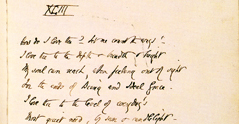COLONIAL DISCOURSES
Series Three: Colonial Fiction, 1650-1914
Part 2: General Works and Fiction from India from the British Library, London
One of the greatest problems facing courses in colonial and post-colonial literature is the scarcity of source materials. This project seeks to remedy that problem.
Series Three, Parts 1-3 are devoted to the literature of India. Part 2 adds a further 51 works of fiction and 14 non-fictional works describing life in India.
- Particular attention has been paid to women writers and this will be a major source for all those studying women’s writing in relation to India.
- Sample items include: Florence Marryat’s Gup (1868) and Veronique (1869); Seven further volumes by Katherine Helen Maud Diver including the Captain Desmond, VC trilogy (1907-1916) and Lilamani (1911); and a further three works by Mary Martha Butt including The Lady and her Ayah (1816).
- Indian imprints and authors include Amir Dihlavi Khusrau’s The tale of the Four Durwesh (1813), Lal Behari Day’s Govinda Samonta, or the History of a Bengal Rayat (1874), Chantu Menou’s Induleka (1890), Rentala Venkata Subba Rau’s Kamala’s letters to her husband (1902), Vandyopadhyaya’s Indian detective stories (1911), and M H Sanke’s Joseph Sastry; or, Hari Haran, a novel (1914).
- Other noted works of fiction are The Nabob (1773), G O Trevelyan’s The Competition Wallah (1864), and Boxwallah’s An Eastern Backwater (1916).
|















